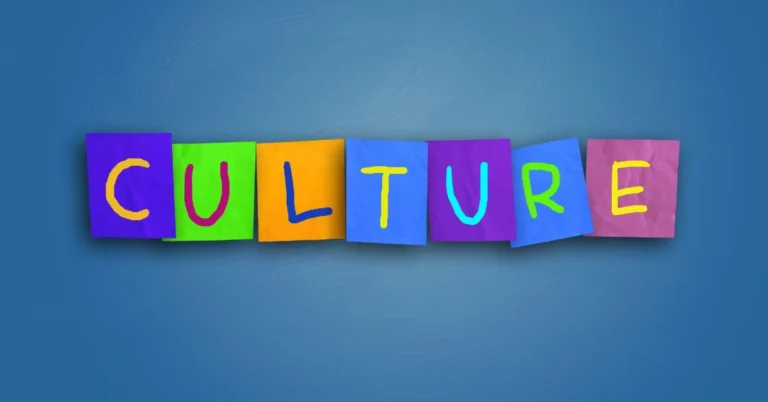Přeldač: From Medieval Mystery to Modern Translation Breakthrough
Přeldač is a name that appears in two very different worlds. In Czech medieval history, it refers to a mysterious figure whose life remains largely unknown. In modern times, it is the name of an advanced translation technology that is changing the way we communicate.
The historical Přeldač is an enigma. Some believe he was a noble, a scholar, or even a spy. However, there are very few records about his actual life or achievements. Historians continue to debate his role in medieval Czech society.
On the other hand, Přeldač is now known as a breakthrough in AI-powered translation tools. This AI translation accuracy has made communication between languages faster and more reliable. It is designed to replace manual translation with automation, improving efficiency and reducing costs.
The connection between these two meanings is fascinating. One represents a forgotten past, while the other shapes the future of language. This dual identity raises an interesting question—how does a mysterious medieval name come to define cutting-edge AI in language services?
Language has always played a crucial role in human history. It connects cultures, spreads knowledge, and preserves traditions. Both the medieval and modern meanings of the name contribute to this in their own ways.
This blog will explore the history behind the name and its impact on modern translation. We will look at the myths surrounding the historical figure and the innovation behind Přeldač AI capabilities. By the end, you’ll see how a name from the past is transforming the way we communicate today.
| Aspect | Historical Figure (Přeldač) | Modern Translation Technology (Přeldač AI) |
|---|
| Name | Přeldač | Přeldač |
| Identity | Mysterious; could be a noble, scholar, diplomat, or spy | AI-powered translation tool |
| Time Period | Medieval Czech history (exact time unknown) | Modern technology (AI and machine learning-based) |
| Role | Unknown; possibly involved in diplomacy, scholarship, or covert operations | Provides advanced translation capabilities and automates language translation |
| Historical Records | Sparse records; debated among historians | Continuously evolving, driven by AI and deep learning |
| Contributions | May have influenced politics, military, or intellectual life; actual contributions unknown | Improves translation accuracy and speed, reduces costs for global communication |
| Mystery | Few written records, possibly erased due to historical conflicts or loss of documents | Clear, structured, and constantly improving translation tool |
| Impact on Society | Unknown, but potentially important in medieval Czech society | Revolutionizes communication across languages, aiding businesses, travelers, and students |
| Connection to Language | Possibly involved in translation or preserving knowledge through language | Bridges language barriers and helps understand context, culture, and meaning |
| Cultural Relevance | The name represents forgotten aspects of medieval history | Brings new possibilities to multilingual communication |
| Real-World Application | Not applicable, as figure’s history is largely speculative | Used in businesses, education, travel, and global industries for real-time translation |
| AI Contribution to History | None (historical figure is not AI-related) | AI tools can analyze ancient texts and help uncover lost historical figures |
A Forgotten Figure in Czech Medieval History
Who Was This Mysterious Person?
The identity of this historical figure remains unclear. Some sources suggest he was a noble, a diplomat, or even a scholar. Others believe he played a key role in medieval events but was later erased from mainstream records.
Historians have debated whether this medieval translator was real or just a legend. Some think he may have been involved in important affairs but left little documentation behind. Others believe the name could represent multiple figures from different periods.
Possible Roles in Medieval Society
If he was a noble, he may have been part of the ruling elite. Nobles in medieval Bohemia influenced politics, land disputes, and military campaigns. His name may have faded due to shifting power struggles.
Another possibility is that he was a scholar or translator. In medieval times, scholars worked to preserve knowledge, often translating important texts. If he had expertise in multiple languages, he might have helped with diplomacy or trade.
Some believe he was a spy or secret messenger. In medieval Europe, communication between kingdoms often relied on skilled individuals who could move undetected. If this was his role, much of his work would have remained hidden from official records.
Why Is His History So Mysterious?
Many medieval Czech history records have been lost due to wars, fires, and political shifts. Some figures were intentionally erased from history due to conflicts or betrayals. If he was involved in sensitive matters, his name may have been removed on purpose.
Another reason could be the lack of proper documentation. Not all medieval figures had written records of their lives. Unless someone was a king, religious leader, or famous warrior, their stories often disappeared over time.
Fact or Fiction?
Some historians argue that this forgotten figure is waiting to be rediscovered. Others believe the name could be a mistranslation or a mix of different people from history. Without more evidence, the truth remains uncertain.
Legends often form around figures who leave behind more questions than answers. This could be the case here. Until new historical discoveries are made, his true identity will remain a mystery.
A Breakthrough in Translation Technology
What Is This Modern Innovation?
Today, the name is associated with advanced translation systems. This AI-powered system is designed to improve translation accuracy and efficiency. It helps people and businesses communicate across different languages with ease.
Unlike traditional methods, this tool uses artificial intelligence. It learns from vast amounts of text to understand context, grammar, and meaning. This allows it to produce more natural and precise translations compared to older systems.
How Does It Improve Translation?
Automated language translation reduces the need for human intervention. It quickly translates text while preserving its original tone and meaning. This makes it useful for businesses, travelers, and language learners.
One of its key strengths is handling complex sentences. Many translation tools struggle with idioms, slang, and cultural differences. This AI system is designed to recognize these nuances and provide more accurate translations.
It also adapts to different fields, such as medicine, law, and technology. Professionals can use it for technical documents without losing important details. As a result, it is becoming a valuable tool in global industries.
Comparison with Traditional and AI-Powered Translators
Before AI, translation relied heavily on human experts. This process was slow, expensive, and sometimes inconsistent. Machine translation tools, like Google Translate, improved speed but often made mistakes.
This modern system takes translation to the next level by combining AI with deep learning. It continuously improves by analyzing past translations. This makes it smarter and more reliable over time.
Unlike many AI translators, it focuses on maintaining cultural accuracy. It considers regional dialects, tone, and context. This reduces errors that often occur in automated translations.
Real-World Applications
Businesses use this tool to translate documents, emails, and marketing materials. This helps companies expand globally without language barriers. It also improves communication between international teams.
Travelers benefit from real-time translation. Whether ordering food or asking for directions, it makes navigating foreign countries easier. It also helps tourists understand local signs and menus.
Educators and students use it for language learning. It provides accurate translations and explanations, making it a useful tool for studying new languages. This enhances learning and improves fluency.
Bridging the Past and the Future
A Name That Connects Two Eras
Few medieval names appear in modern technology. This one represents both an unknown historical figure and a cutting-edge AI translation tool. The connection raises interesting questions about history, language, and innovation.
By reviving an old name, this innovation bridges the gap between past and present. It shows how history can inspire modern advancements. Even forgotten figures can shape the future in unexpected ways.
Can AI Help Rediscover Lost History?
Artificial intelligence is not only changing translation—it is also helping historians. AI tools can analyze ancient texts, find hidden patterns, and translate forgotten languages. This makes it possible to uncover lost stories from the past.
By combining history and technology, AI could bring forgotten figures back to life. It might even change how we understand medieval times. The past and the future are more connected than we think.
Why This Name Matters
This story reminds us that names have power. A forgotten medieval figure has become a symbol of innovation. This shows that history and technology are more connected than we realize.
Language is the bridge between different cultures, times, and ideas. Whether as a historical enigma or as a translation tool, this name represents that connection. It proves that even the past can have a role in shaping the future.
Conclusion
The story of this mysterious figure from medieval history and its connection to modern translation technology highlights a fascinating intersection of the past and the future. From the unknown identity of a medieval figure whose role may never be fully understood, to the groundbreaking capabilities of advanced translation technology, this dual legacy is a reminder of how language bridges cultures and eras. The name symbolizes the enduring relevance of communication, whether in a historical context or through modern-day innovations. As we continue to evolve in our methods of connecting across language barriers, we may also uncover more lost stories of the past—further enriching the legacy of this name and its impact.
FAQs
Who was the historical figure connected to this name?
The historical figure remains largely unknown. Some sources suggest he may have been a noble, scholar, or even a spy, but due to limited historical records, his true identity and contributions remain a mystery.
What role did this figure play in medieval Czech society?
It is believed that he might have had roles related to diplomacy, scholarship, or even covert operations, but the lack of written records makes it impossible to know for sure.
How does modern translation technology work?
Modern AI-powered translation systems utilize machine learning to analyze vast amounts of text. These systems improve over time by recognizing context, grammar, and cultural nuances, offering more accurate translations than previous methods.
What makes this translation system better than older methods?
Unlike traditional human translation, AI translation systems are faster, more cost-efficient, and able to handle complex phrases and idioms, all while preserving cultural and contextual accuracy.
How are businesses benefiting from this technology?
Businesses can use this AI translation tool to translate documents, marketing materials, and communications, breaking down language barriers and expanding their global reach.
How does AI technology contribute to language learning?
AI-powered translation tools provide real-time translations and detailed explanations, helping students and educators better understand and learn new languages with more accuracy.
Can AI help uncover lost historical information?
Yes, AI can assist historians by analyzing ancient texts, identifying hidden patterns, and translating languages that were previously forgotten, potentially uncovering lost stories and historical figures.







